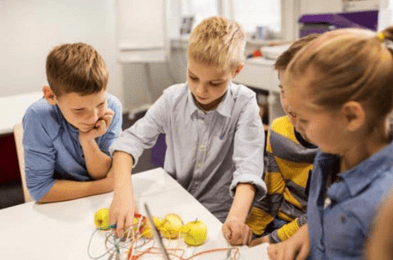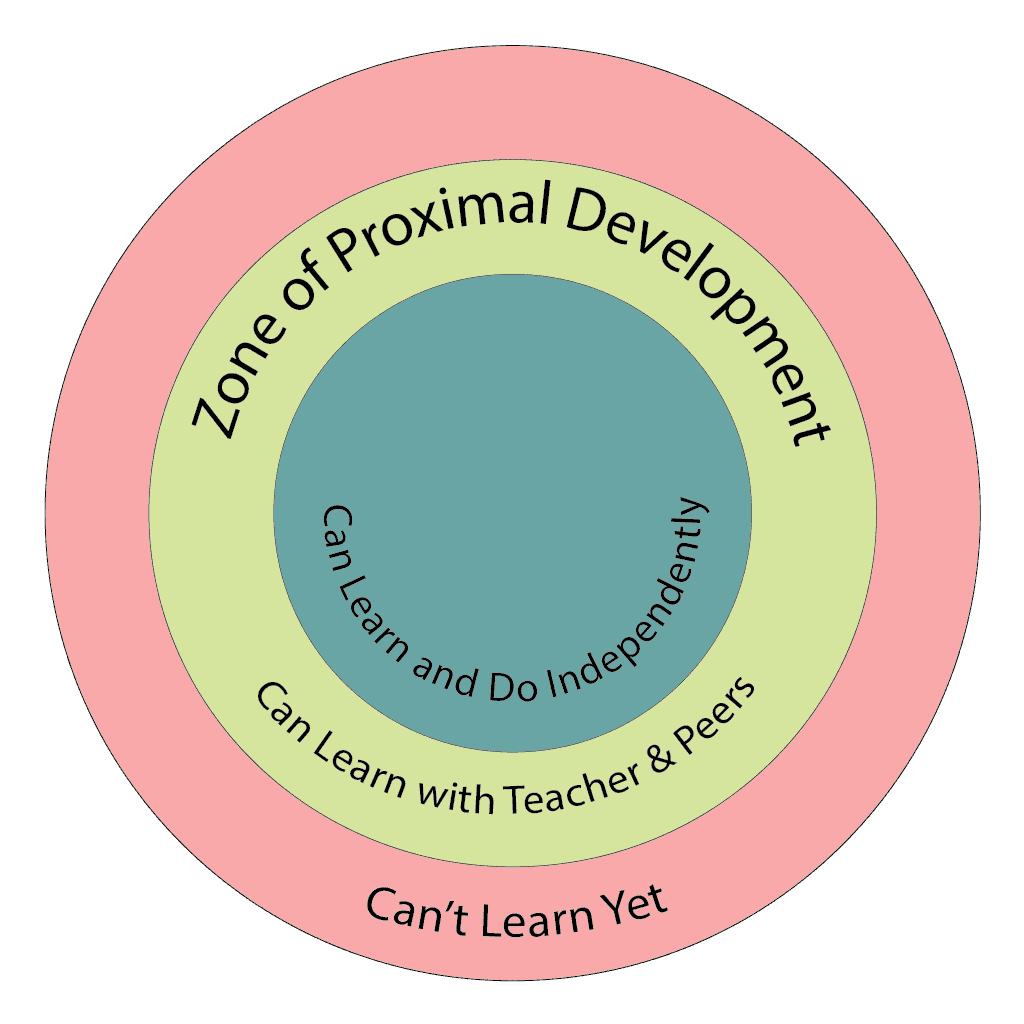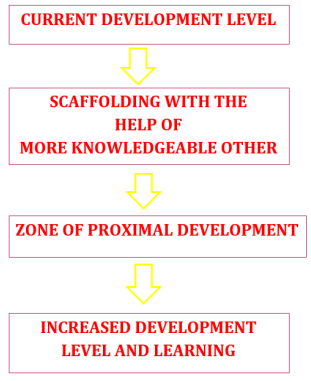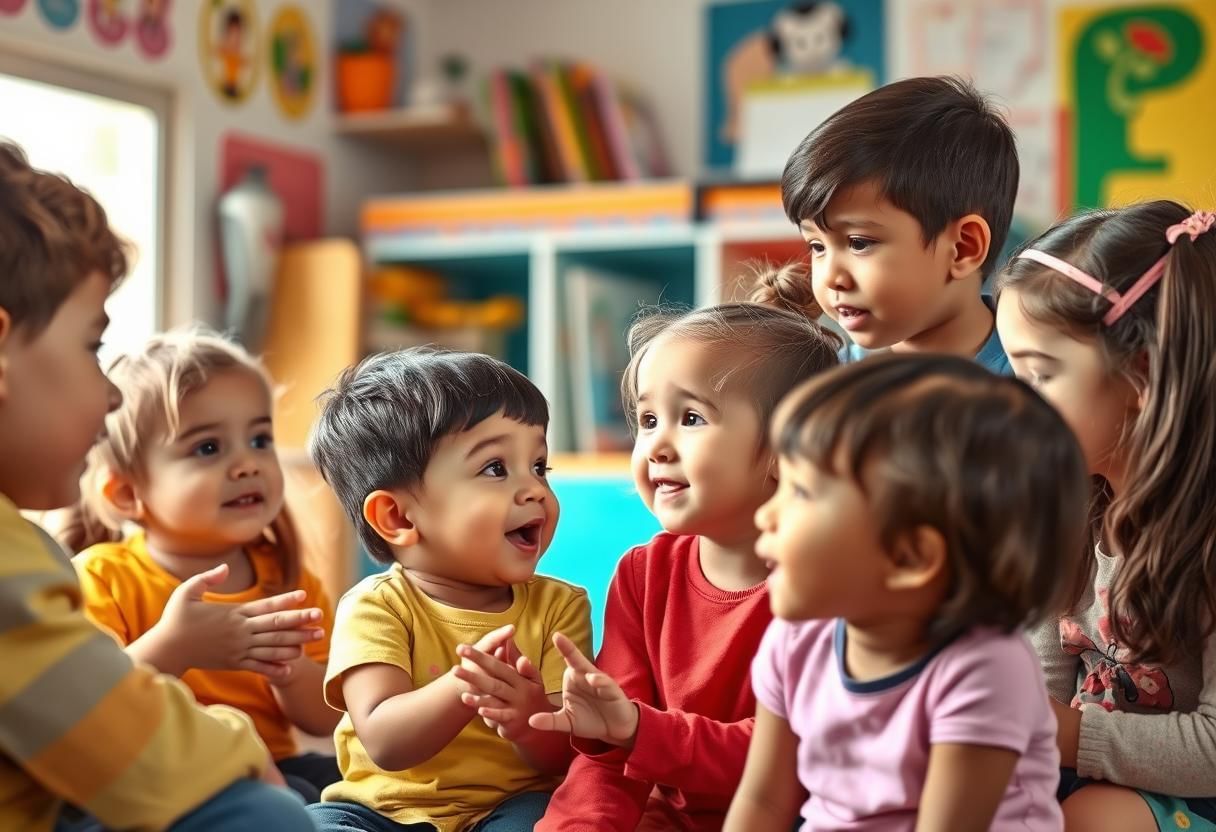Notes: Vygotsky's Sociocultural Development | Child Development and Pedagogy for CTET Preparation - CTET & State TET PDF Download
Introduction
Lev Vygotsky was a Russian psychologist who proposed a sociocultural theory of cognitive development. He emphasized the fundamental role of social interaction and culture in the development of cognition. According to Vygotsky, cognitive development is not just an individual process but is profoundly influenced by the social and cultural context in which a child is raised.- Social Interaction: Vygotsky believed that children learn and develop their cognitive abilities through social interactions with more knowledgeable individuals, such as parents, teachers, and peers. These interactions provide the guidance and support necessary for children to acquire new skills and knowledge.
- Culture: Vygotsky argued that the way children think and understand the world is shaped by the cultural tools and symbols available in their environment. Different cultures provide different tools for thinking, such as language, mathematics, and problem-solving strategies, which influence how children process information and develop cognitively.
- Zone of Proximal Development (ZPD): One of Vygotsky's key concepts is the ZPD, which refers to the difference between what a child can do independently and what they can achieve with guidance and support from a more knowledgeable person. Vygotsky believed that learning occurs most effectively within this zone, where challenges are present but achievable with assistance.
In essence, Vygotsky's theory underscores the collaborative nature of learning and the significant influence of social and cultural contexts on cognitive development. Children are seen as active participants in their learning process, capable of reaching higher levels of understanding through interaction and collaboration with others.
Effect of Culture on Development
- Children are born with basic thinking skills, which improve through interaction with their surroundings.
- The culture in which a child is raised plays a crucial role in shaping this cognitive development.
Example 1:
- In some cultures, people use mnemonics to help remember things.
- Mnemonics are memory aids, like using the word VIBGYOR to recall the colors of the rainbow.
- In other cultures, mind maps are popular for remembering information.
- A mind map is a visual tool that organizes information in a diagram.
- The image below illustrates what a mind map looks like.

Example 2:
- In some cultures, eating non-vegetarian food is viewed negatively.
- Children growing up in these cultures are likely to be influenced by such beliefs.
- As a result, they may not believe that eating non-vegetarian food can help treat certain diseases.
- The cognitive development of these children is shaped by the cultural tools they adapt to, such as their beliefs and values.
Effect of Social Interactions on Development
 Social Learning Interaction
Social Learning Interaction
Vygotsky's Perspective:
- Vygotsky believed that young children are naturally curious and actively involved in their own learning and discovery. He highlighted the importance of social interactions in development, contrasting with Piaget, who emphasized self-initiated learning.
- According to Vygotsky, much of a child's learning happens through social interactions with a capable tutor, like a parent or teacher. This involves cooperative or collaborative dialogue, where the tutor demonstrates behaviours or gives verbal guidance.
- The child aims to understand and internalize the actions or instructions from the tutor, applying this knowledge to manage and improve their own performance.
Internalization:
- Internalization refers to the process by which an individual accepts a set of norms and values established by others through socialization. It involves moving an idea, concept, or action from outside the mind to an internalized belief.
- For example, when a teacher instructs a student not to throw food on the floor, the student gradually internalizes this norm and abides by it whenever eating.
Example: A Young girl who is given her first jigsaw. Alone, she performs poorly in attempting to solve the puzzle. The father then sits with her and describes or demonstrates some basic strategies, such as finding all the corner/edge pieces and provides a couple of pieces for the child to put together herself and offers encouragement when she does so. As the child becomes more competent, the father allows the child to work more independently. According to Vygotsky, this type of social interaction involving cooperative or collaborative dialogue promotes cognitive development.
Social Learning Precedes Development
Vygotsky’s Social Development Theory:
Vygotsky's theory emphasizes the crucial role of social interaction and cultural context in cognitive development. He believed that children learn best through interactions with others, such as parents, teachers, and peers, and that cultural tools like language and technology are essential for cognitive growth.
Key Concepts:
- Social Interaction: Vygotsky emphasized the importance of social interactions in learning. He argued that children learn best when they engage with others, such as parents, teachers, and peers.
- Cultural Tools: Vygotsky believed that cultural tools, including language, symbols, and technology, are crucial for cognitive development. These tools help individuals process information and develop higher mental functions.
- Zone of Proximal Development (ZPD): This concept refers to the range of tasks that a child can perform with the guidance and assistance of a more knowledgeable person. Vygotsky argued that learning occurs most effectively within this zone.
- Scaffolding: Scaffolding involves providing support and guidance to learners as they work on tasks within their ZPD. As learners become more proficient, the support is gradually removed.

Example:
- Learning to Ride a Bicycle: When a child learns to ride a bicycle, a parent or older sibling may provide assistance by holding the bike steady (scaffolding) while the child pedals. As the child becomes more confident and skilled, the assistance is gradually reduced, allowing the child to ride independently.
Applications in Education:
- Collaborative Learning: Encouraging group work and collaborative projects in the classroom to promote social interaction and shared learning experiences.
- Use of Cultural Tools: Integrating technology, language, and other cultural tools into the learning process to enhance cognitive development.
- Differentiated Instruction: Tailoring teaching methods and materials to meet the diverse needs of learners, ensuring that each student is challenged within their ZPD.
Vygotsky’s Perspective on Learning:
- Vygotsky viewed learning as a social process that involves active participation and collaboration. He believed that knowledge is co-constructed through interactions with others and that learners bring their cultural backgrounds and experiences into the learning process.
- He emphasized the dynamic nature of learning, where individuals continuously adapt and modify their understanding based on social interactions and cultural influences.
More Knowledgeable Other
 Father Son Baseball Catch
Father Son Baseball Catch
- Definition: The More Knowledgeable Other (MKO) refers to an individual who possesses a superior understanding of a particular concept, idea, or body of knowledge. The MKO can be a teacher, a peer, a parent, or even a technological system.
- Example 1: Consider a scenario where a teacher, who has a deeper understanding of a subject, assists students in solving problems. In this case, the teacher serves as the MKO. Similarly, if a peer with greater knowledge of a PlayStation game helps a friend improve their gameplay, the peer becomes the MKO.
Electronic Performance Support Systems
Some companies are now utilizing electronic performance support systems, which are not individuals but technological tools, to aid employees in their learning processes.
- Example 2: Illustrating the concept of MKO through a father and son playing catch in the backyard. The father, being more knowledgeable about baseball, acts as the MKO by teaching his son the basics of the sport. Fast forward twenty years, the son is now a professional baseball player, and the roles have reversed. Before a major game, the son gives his father an advanced camcorder and teaches him how to use it. In this scenario, the son becomes the MKO because of his superior knowledge of the camcorder. Later, the son leaves but downloads an app on his father’s phone to assist him further. At this point, the father’s MKO is the electronic device, his cell phone, guiding him through the camcorder’s features.
Learning from MKO: While self-initiated learning and discovery are valuable, learning becomes more effective and contributes significantly to cognitive development when acquired from a More Knowledgeable Other (MKO).
Zone of Proximal Development
- The Zone of Proximal Development (ZPD) is a crucial idea in understanding the difference between what a child can do on their own and what they can achieve with the help of a skilled partner.
The ZPD represents the sweet spot for learning, where a child needs guidance and encouragement to reach their potential. Vygotsky's Model of Learning:
Vygotsky's Model of Learning:
- Vygotsky's model is depicted in a circle with three rings.
- The inner circle shows what the child already knows.
- The outer circle represents what the child does not yet know and is too difficult to learn on their own.
- The middle circle, which is the Zone of Proximal Development, is where learning happens with the assistance of a More Knowledgeable Other (MKO).
Example 1: Jigsaw Puzzles
- In the example of a child struggling with jigsaw puzzles, the ZPD is the gap between what the child knows (that the blocks need to be connected) and what they don’t know (how to connect them).
- The father, as the MKO, helps the child cross this gap and achieve something they couldn’t do alone.
- The ZPD is a delicate area where guidance and instruction are needed, as the child requires direction and encouragement to succeed.
- Vygotsky believed that teachers should promote collaborative learning, as children can learn from each other and help each other cross their ZPDs.
Example 2: Learning to Play Ball
- In the example of a parent teaching their child to play ball, the initial stages involve the parent closely guiding the child, showing them how to hold, pull back, and throw the ball.
- As the child becomes more skilled, the parent gradually steps back, allowing the child to practice independently while still offering occasional guidance.
- Eventually, the child learns to play ball on their own, demonstrating how the ZPD functions in real-life situations.
Example 3: Father Teaching Son to Use a Camcorder
- In this scenario, a child is teaching their parent how to use a camcorder. Initially, the child guides the parent through the process, showing them how to turn it on and explaining its main features.
- As the parent becomes more familiar with the camcorder, the child steps back, allowing the parent to practice independently, with occasional reminders and corrections.
- This example illustrates the ZPD concept, with the child acting as the MKO, helping the parent learn a new skill.
Scaffolding
 Father guiding child
Father guiding child
Scaffolding in Learning:
- Definition: Scaffolding refers to the support provided by a More Knowledgeable Other (MKO) to help a child cross the Zone of Proximal Development (ZPD).
- Purpose: It assists learners in completing tasks that they cannot accomplish independently.
- Gradual Reduction: Scaffolding should be gradually decreased as the child begins to understand the concepts and becomes more proficient.
Examples:
- Jigsaw Puzzle: In the example of a jigsaw puzzle, when a father helps his child by guiding her in putting the pieces together, he is providing scaffolding. As the child becomes more capable, the father reduces his assistance, allowing her to complete the puzzle on her own.
- Basketball: Similarly, in the scenario of a father teaching his son how to play basketball, the father initially offers guidance and support. Over time, as the son learns and improves, the father gradually decreases his help, enabling the son to play independently.
Strategies for Scaffolding
- Scaffolding does not mean that the instructor should do the work for the child.
- Instead, it refers to the idea that the teacher or peer should help the child in a way that enables the child to learn how to do the task by themselves over time.
- The strategies for scaffolding will include various methods to support this learning process.

Combined view of MKO, ZPD and Scaffolding

Vygotsky's Perspective on Make-Believe Play
 Child Language Development
Child Language Development
- Vygotsky believed that make-believe play plays a crucial role in child development. During this type of play, children take on different roles of adults, such as being a doctor, a parent, or an inspector.
- Make-believe play allows children to practice how they would behave in the real world. It gives them the opportunity to learn the basic skills they need to function in society before they grow up.
- However, learning these roles and skills is not something children can do alone. They need help from others in their culture to guide them through the process.
Vygotsky's Views on Language Development
Vygotsky believed that language development is a complex interaction between the child and their environment. He saw language as a crucial part of developing thought. According to Vygotsky, a child's external speech is the first step towards developing thinking skills. He emphasized the importance of communication with others in developing a child's language, which in turn stimulates the growth of thought.In simpler terms, Vygotsky believed that language is learned first, and this learning stimulates the development of thought. He thought that thought and language are separate at the beginning of life but merge around the age of three. At this point, speech and thought become interdependent, meaning that thought becomes verbal, and speech becomes rational.
Forms of Language According to Vygotsky
Vygotsky identified three forms of language:
- Social Speech: This is external communication used to talk to others, typically starting from the age of two. At this stage, children express simple thoughts and basic emotions such as hunger, pleasure, and displeasure through crying, laughing, shouting, and gurgling.
- Private Speech or Egocentric Speech: Usually beginning around the age of three, this form of speech is directed towards oneself and helps the child direct their own behavior. Children use private speech, often in a louder tone, to plan and organize their thoughts, especially during tasks of intermediate difficulty. Vygotsky believed that children who use private speech extensively are socially more competent, and this form of speech is influenced by an individual’s social environment.
- Inner Speech: Over time, private speech becomes less audible and transforms into silent inner speech. This involves thinking processes done in the head without verbalization, such as mental calculations and situation analysis. Inner speech reflects the ability to form opinions and arguments without voicing them out loud.
Impact of Language on Cognitive Development:
- Language plays a crucial role in shaping how people perceive and process information.
- It can influence the speed of cognitive development and is interconnected with other cognitive functions.
- For instance, individuals are more motivated to memorize information presented in a language they understand, while they may ignore content expressed in a foreign language.
Applications of Vygotsky's Theory in Education
 Collaborative Learning Classroom
Collaborative Learning Classroom
1. Reciprocal Teaching: Reciprocal teaching is an instructional approach aimed at enhancing children's reading comprehension skills. It involves a collaborative effort between teachers and students to develop and practice four essential skills:
- Predicting: This skill encourages readers to merge their prior knowledge with the information gathered from the text. For narrative texts, students are prompted to anticipate what might occur next in the story.
- Questioning: Questioning involves readers monitoring and evaluating their understanding of the text by posing questions to themselves. Teachers also play a role by asking questions about unclear or puzzling sections of the text.
- Clarifying: Clarifying focuses on identifying and elucidating unclear, challenging, or unfamiliar elements within a text. This may include awkward sentence structures, unfamiliar vocabulary, unclear references, or obscure concepts.
- Summarizing: Summarizing entails distilling valuable information, themes, and ideas from a text into a clear and concise statement that conveys its essential meaning.
2. Collaborative Learning: Vygotsky advocated for group learning environments where individuals possess varying levels of ability. In such settings, more knowledgeable individuals can assist those with lesser knowledge within their Zone of Proximal Development (ZPD). Here, individuals with advanced knowledge act as More Knowledgeable Others (MKOs), facilitating the learning process for others.
3. Guided or Motivated Learning: Guided learning involves teachers providing support in the form of scaffolding to help children complete tasks and stay motivated. Scaffolding is offered within the children's Zone of Proximal Development (ZPD), with the teacher acting as a More Knowledgeable Other (MKO). This approach ensures that children receive the necessary assistance to accomplish tasks while building their confidence and motivation.
|
67 videos|154 docs|41 tests
|
FAQs on Notes: Vygotsky's Sociocultural Development - Child Development and Pedagogy for CTET Preparation - CTET & State TET
| 1. What is Vygotsky's Sociocultural Theory of Learning? |  |
| 2. How does the concept of the Zone of Proximal Development (ZPD) relate to Vygotsky's theory? |  |
| 3. What role does language play in Vygotsky's Sociocultural Theory? |  |
| 4. How can educators apply Vygotsky's theory in the classroom? |  |
| 5. What are some criticisms of Vygotsky's Sociocultural Theory? |  |
















